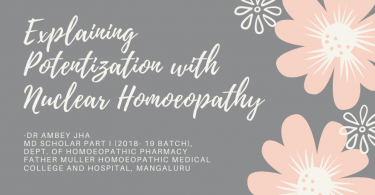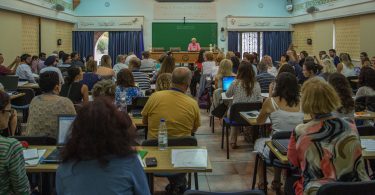Definition
It is an abnormal state of the system, owing to the presence of certain morbid forces (generally inherited) which have the quality of attracting other and similar forces, and whose activity is in direct ratio to the lessened systemic resistance. The various recurrent symptoms people experience throughout their lives (chronic diseases) arise from individual susceptibility, from enduring ‘constitutional’ weakness. Likewise, in order to determine the ’cause’ of an infectious (acute) disease, it is necessary to take into account both the virulence of the infectious agent and the resistance offered by the patient’s defence mechanism. The resistance to contagion is based upon the susceptibility or ‘host resistance’ of the organism; it is largely determined by the miasmatic inheritance of the individual.
The person who suffers from an acute disease (due to an infection, an accident, etc.) or from a chronic disease of a physical or emotional nature is in a state of imbalance, which is unique to him or her. In general, this state of imbalance is caused by the combination of three main groups of factors.
1-The first is the general predisposition or susceptibility.
2- The second is the environment and all factors of stress.
3- The third is the general hygiene or lifestyle of the individual as well as his or her mental hygiene.
Years of experience have enabled Hahnemann to understand and believe, and other homoeopathic physicians to confirm, that in the great majority of cases, the fundamental cause of the disease is the susceptibility of the individual to become ill. In fact, the disease state would only be the expression of this susceptibility to be sick once the combination of the other factors has become favourable to its expression. This susceptibility can be inherited or acquired during life. For this reason, the physician must consider all the symptoms of the patient, even the old ones that are no longer present, and prescribe the most similar or the most homoeopathic remedy. With this homoeopathic treatment, the organism rebalances itself globally to the point that the tendency to be sick is greatly decreased. Therefore, people affected with chronic diseases can expect their level of health to improve with the years. With few exceptions, this improvement is not experienced by people suffering from chronic issues treated with conventional medicine. These results are achieved with the proper homoeopathic treatment because, in the majority of cases, this treatment targets the fundamental cause of disease or the susceptibility.
“The morbific noxious agents, do not possess the power of morbidly deranging the health of man unconditionally; but we are made ill by them only when our organism is sufficiently disposed and susceptible to the attack of the morbific cause that may be present, and to be altered in its health, deranged and made to undergo abnormal sensations and functions, hence they do not produce disease in everyone nor at all times.”
If illnesses were merely a question of bacteria and viruses invading the human organism and conquering it, then everyone who is exposed to that contagion would inevitably succumb. There are countless people in the world who are constantly exposed to morbific agents who do not succumb. We all know that the air we breathe contains a profusion of potentially harmful organisms, but we are not struck down by each and every one of them.
It is frequently observed that only one member of a family escapes a virulent chickenpox virus (or perhaps only one member DOESN’T develop the symptoms!). Why some people sometimes open or susceptible to these influences whilst others are not?
Certain diseases, whether acute or chronic, affect certain people at certain times in their lives. “I’m prone to colds” or “If I’m upset, my stomach always feels it first” are common cries. Our ‘normal’ reaction is just to say that that person is susceptible to ‘this or that’ and to generally leave it there. However, as homoeopaths, it is necessary for us to begin to consider this question of the susceptibility of an organism to disease, and the predisposition of individuals, families and races to certain diseases.
Expert view regarding Susceptibility-
Kent says, “Human beings have varying degrees of susceptibility and because of this, some are protected from disease causes while others become sick. When a disease is in the stage of contagion, the cause of disease flows continuously until the individual susceptibility is satisfied. If there were no limit to this influx, the disease would run its course until the person’s death. So, the influx of the cause is stopped and therefore the disease declines because of the resistance offered by the person’s susceptibility.”
Stuart close wrote- “Susceptibility we mean the general quality or capability of the living organism of receiving impressions; the power to react to stimuli. Susceptibility is one of the fundamental attributes of life. Upon it depends on all functioning, all vital processes, physiological and pathological. Digestion, assimilation, nutrition, repair, secretion, excretion, metabolism and catabolism, as well as all disease processes arising from infection or contagion, depend upon the power of the organism to react to specific stimuli.”
H.A. Roberts wrote, “Everything that has life is more or less influenced by circumstances and environment.” Disease or disharmony results when the organism cannot readily adapt to morbific agents (viruses, environmental pollution, grief, jealousy, etc.) and where that organism, because of constitutional weakness, is open or susceptible to adverse effects from the external influences.
We have learned that as dynamic organisms we are affected initially on a dynamic level, and this original disturbance eventually results in the production of symptoms on the mental, emotional or physical levels of the organism.
“The one who is made sick is susceptible to the disease cause in accordance with the plane he is in and the degree of attenuation that happens to be present at the time of the contagion. The degree of the disease cause fits his susceptibility at the moment he is made sick.”
Susceptibility and Childhood Contagious Diseases-
In childhood, before contagion, the state of health in constitutional terms displays a need or lack. This need maybe because of the child’s inherited tendencies to disease.
Roberts says that:
“The human economy has inherited many tendencies from the accumulations of its ancestral heritage. These tendencies show themselves in childhood in the great number of so-called children’s diseases, which are nothing more or less than an inward turmoil of bringing to the surface and expelling certain conditions; again, these eruptions are a lack of ability on the part of the patient to create a similar state within his own economy to satisfy the susceptibility … Nature steps in with the laws of susceptibility and influence are attracted which blooms forth like an infectious or contagious disease, so as to most fully satisfy this susceptibility.”
Conclusion
The review of the concept of susceptibility according to well-known homoeopathic physicians such as Hahnemann, Kent, Roberts, Stuart close brings me to the conclusion that despite the way this concept is described, each of this physicians believes that susceptibility is the fundamental cause of disease. Since homoeopathic treatment emphasizes this fundamental cause, and providing individualized treatment to the suffering of humanity and restoring an individual’s health surely and permanently without any harmful side effect.





